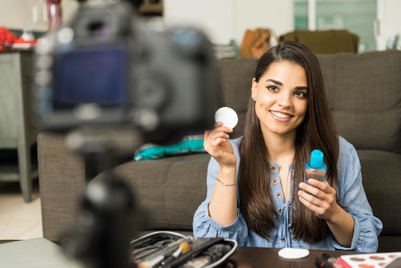The background for the panel discussion, moderated by Emily Tan, Campaign Asia-Pacific Insights editor, was that brands are increasingly investing in creating compelling content that is not merely promotional but is valued by the audiences they target. And, thanks to the low barrier of entry for digital publishing, they are creating their own platforms and building their own audiences.
For example, Coca-Cola has turned its corporate website into a magazine, Google has published its journal, Think Quarterly, and Dolce & Gabanna and LVMH have launched fashion and lifestyle digital publications Swide and Nowness.
Alibaba's Alizila website is a corporate news blog covering the e-commerce Industry in China. The internet company designed it in 2010 to help fill a void in business coverage.
"Everyone wanted the [Alibaba founder] Jack Ma story—the easiest story to tell," said Pamela Muñoz, manager of international corporate affairs at Alibaba Group. "Stories about entrepreneurs on our platform are also worthy to tell, we felt."
Readership numbers for the blog are "very low", said Muñoz, but she and her team are still actively pushing the stories out to reporters and bloggers of smaller publications that may not have the resources to cover bigger stories on their own.
Jim Erickson, a former Time magazine editor in Hong Kong, is behind Alizilla. "In the same way we pitch to reporters, we also have to pitch to Jim," said Muñoz, who emphasised that content on Alizila is different from advertorials, as the content is written with an editorial view.
"We have had negative news broken on Alizilla before, but of course Jim has to balance having his paycheck paid by Alibaba and being credible by pointing out things that weren’t working so well," she said.
That stand was echoed by Paul Miles, head of communications at Nissan Asia. Last year, the car maker turned to "kotozukuri" (storytelling in Japanese) to take its marketing up a gear with its own branded content.
"Yes, there is an internal motivation factor for stories being told from our side, but sometimes we're admitting some of the issues we have with our vehicles as well. Media outlets use our content, for a win-win situation," Miles said.
As with Alizila, Nissan's branded content site is trying to gain traction. "We're planting seeds," Miles said. "Because everyone's talking at the same time, we wanted to have a bit of structure. Journalists from the TV and print fields were hired for that, but it is still a learning process for them how to create content from a car manufacturer's point of view."
Miles cited an example of the team instinctively wanting to film a concept car not yet on the market to put on Youtube, but the brand could not allow that.
These are some of the brands taking opportunities to embrace content marketing in the form of sponsored editorials, largely non self-promotional, that they hope readers will be genuinely interested in.
Many media owners, however, regard all this brand activity as increased competition since they have been battling falling advertising revenue. Not so for Dow Jones.
Shawn Hiltz, Asia-Pacific vice president of marketing at Dow Jones, revealed a two-week old initiative called WSJ Custom Studios that provides custom publishing and special advertising sections for brands, with Robin Riddle from The Economist joining as publisher.
Hiltz said content created in the Studio can be hosted on either Dow Jones or the brands' own platforms. "Other publishers are really missing the boat," Hiltz said.
"Flare-ups" over editorial integrity are managed through an ethics committee in New York. "Everything is discussed, sometimes in our favour, sometimes not," Hiltz said. "But we offer the integrity of our publication as a platform. Crossing the line of editorial integrity won't be good for anybody—us or the brands."
That degree of control is useful for brands who want to develop market leadership, according to Martin Shaw, North Asia digital head at Maxus. Putting out ads is no longer enough, and longer-form content that guides consumers at a deeper level is the order of the day.
"On the Chinese edition of Esquire, you can buy a full-page feature on your CEO for $20,000. But not on the WSJ," Hiltz pointed out.
The fact is, if brands want to create "their own safe environment where only their ads are seen", they run the risk of their advertising being unappealing. The ads next to stories about the bombings in Boston, for example, are getting the eyeballs, Hiltz advised.
And creating content that is impartial is of essence, said Muñoz. "A lot of times the Alibaba marketing team come to us with product stories telling the 'what' instead of the 'why'," she said. "We usually say no if those are not credible."
"It's not about the source, or position of the content, but the content itself," added Miles. Nissan had a story on diversity, something Japanese companies are not really known for, that was offered to the media, he said.
As Shaw suggested, Nike knows a great deal about running. "Why not get out there yourself and create your own content to be a thought leader?" he said. At the end of the day, what matters is good content, regardless of who publishes it.
Successes, Shaw said, have come from creating content that is truly useful to the client's consumers. "That drives conversions."




















.jpg&h=334&w=500&q=100&v=20250320&c=1)


.png&h=334&w=500&q=100&v=20250320&c=1)








.jpg&h=268&w=401&q=100&v=20250320&c=1)




.png&h=268&w=401&q=100&v=20250320&c=1)